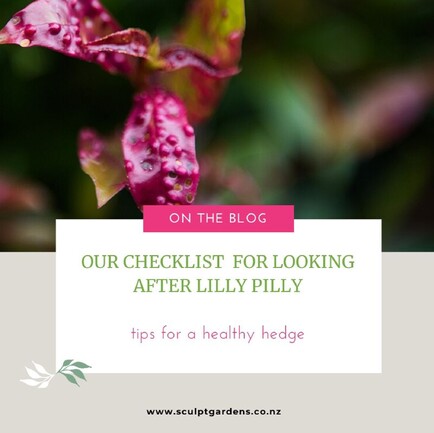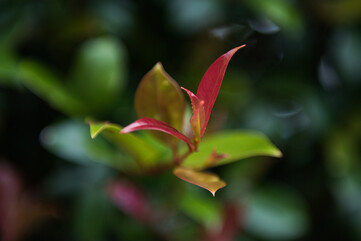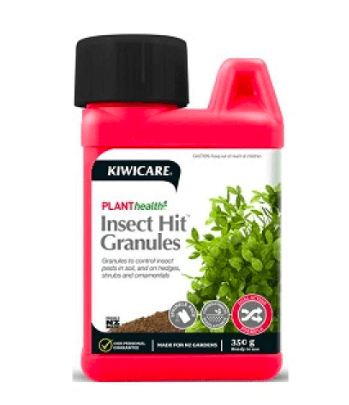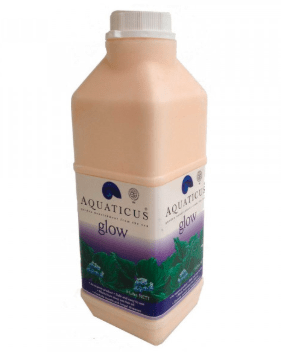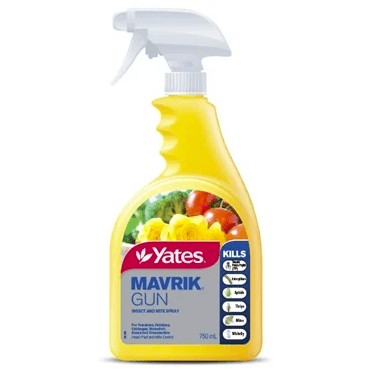***NEW TOP TIP ADDED SINCE WRITING THE ORIGINAL ARTICLE***
Since writing this article - the problem has got worse and worse in Auckland. This is what we are doing now.
Sculpt Gardens no longer uses Lilly Pilly (Eugenia ventenatii) in our garden designs, using instead Syzygium Resilience (Psyllid resistant Lilly Pilly) from Blackbridge Nurseries.
If you already have lilly pilly in your garden, the new solution we are using with HUGE success is TREE HEALTH BANDS from Cross Hills Nursery with their Super Thrips Killer. You don't need to spray anymore, just soak the band in the insecticide each month and pin to the trunk!!! You still need to water & fertilise as per the tips 1,2,3 + 5 below though so your trees are strong and healthy.
Good luck!
(may the gardening force be with you)
Here are the 5 things you should be doing to keep your Lilly Pilly hedge healthy from psyllid & thrip infestations
Eugenia ventenatii, better known as lilly pilly is an often used hedging plant chosen for its vigorous growth and ability to grow tall quickly to screen out unpleasant views. It has a lovely reddish tinge on the new growth and really bushy with a fine leaf to give a really dense hedge - a perfect solution.
However, over the past few years in North Shore gardens Lilly Pilly has fallen foul of Eugenia psyllids - small sap sucking insects which leave lumps on leaves and distort the plant's growth. The damage is mainly aesthetic but severe infestations can cause major problems. Claire from Sculpt Gardens shares her strategy for tackling this infestation.
1 / Keep Your Hedge Healthy
Firstly, the health of the plant plays a major role. Plants that are stressed and in poor condition due to lack of water or nutrients are far more susceptible to attack. Make sure that you are watering young plants regularly in summer and during dry times. When you water, water well once a week - i.e. a bucket of water per plant in the summer. A thick layer of mulch at the base of each plant will help keep that moisture locked in too.
2 / Feed
We've had good feedback from our client Jackie who also uses Kiwicare's Insect Hit Granules applied to the soil every 2 - 3 months. We would also recommend feeding with sheep pellets and a general fertiliser every 6 months (don't use sheep pellets if you have dogs!). A monthly liquid feed of Seasol would be good too.
3 / Spray in Spring - Aquaticus Glow
Spray hedges at the start of spring thoroughly with Aquaticus Glow to help keep insect numbers down, and repeat every 2 months. Glow is an oil-based spray, which works by smothering the insects. To ensure that it is effective, make sure that you thoroughly spray your plants until the spray starts to run down your trunk.
4 / Systematically Spray
Spray thoroughly over all foliage with an insect spray such as Maverik. Repeat spray after 7-14 days and on an ongoing if necessary. Do read the instructions carefully, wait for a dry day, wear a mask and remember to apply the second spray 7 - 14 days after the first. Don't forget to spray the underside of the leaves too. If you have pets, keep them inside when spraying until the product is dry on the leaves.
5 / Trim & Tidy Up
Trim the hedge regularly, remove badly damaged leaves and rake up leaf litter.
